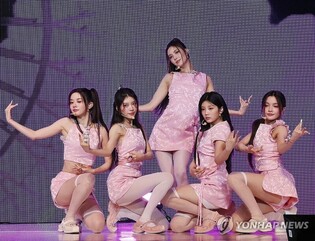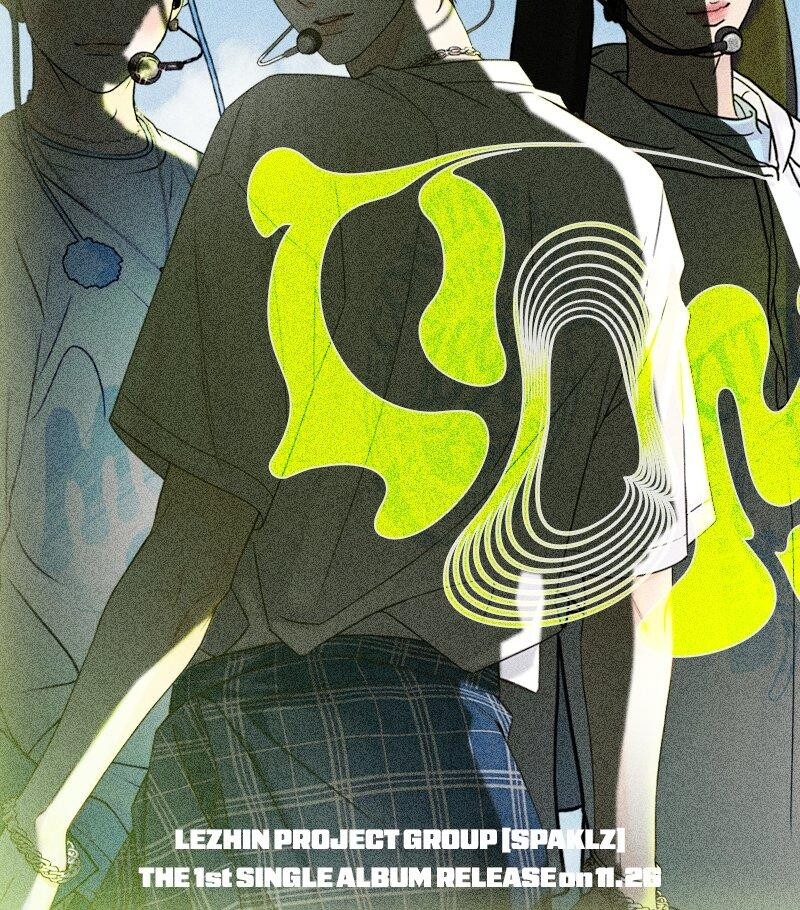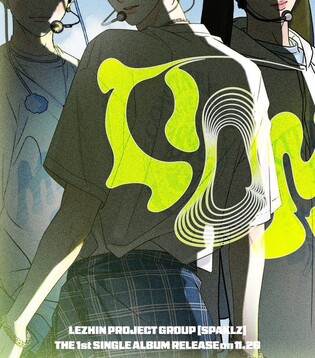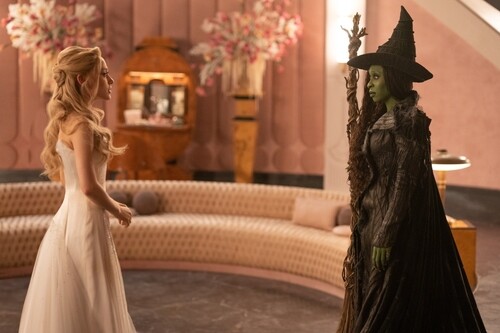Paik Nam-june’s 'Tiger Lives' – Part 3
By Lee Dong-il (Performing Arts Director, Guest Professor at Sogang University
 |
Paik Nam June's work 'The Tiger Lives' was conceived with the intention of symbolizing the bravery, dignity, and humor deeply embedded in Korean life through the image of the tiger.
The tiger, a central figure in folklore and popular beliefs, was chosen to embody the spirit and future direction of 21st-century Koreans.
The tiger's resilience and vitality, demonstrated by its survival across the Korean landscape for over five thousand years amidst historical hardships and adversity, were intended to serve as a metaphor for the future of Koreans in the 21st century.
This concept was expressed through a blend of Paik's previous works, images of tigers from folk paintings, traditional rituals, symbols of the Cold War, symbols of harmony with nature, and artistic interactions with various global popular cultural arts.
The project's inception began with Paik's early assertion of 'LIBIDO 2000.' He aimed to transform the Cold War symbol of the DMZ into a symbol of life through images of male and female dancers and a live performance by an international pop star.
Legendary contemporary dancer Merce Cunningham, a long-time artistic comrade of Paik, was set to play the lead role in the dance scenes. Renowned artists like David Bowie from the UK, Laurie Anderson and Peter Gabriel from the US, and Cui Jian from China expressed interest in participating. However, due to constraints of time and budget, these collaborations could not be realized.
Following this, the work aimed to present an omnibus format that showcased the harmony of Korea's traditional and modern cultural strengths. This included reinterpretations of ancient traditional arts, such as the Jindo Ssitgim-gut, recognized globally for their excellence.
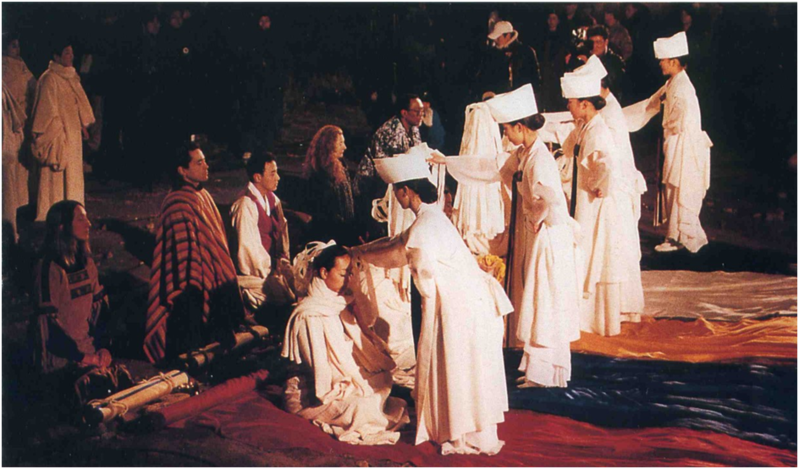 |
| ▲ A scene from the rehearsal of 'DMZ 2000' at the Bridge of Freedom in Paju. Photo courtesy of the author. |
'The Tiger Lives' aimed to symbolize the bravery, dignity, and humor deeply embedded in Korean life through the image of the tiger. The tiger, a central figure in folklore and popular beliefs, was chosen to embody the spirit and future direction of 21st-century Koreans.
The tiger's resilience and vitality, demonstrated by its survival across the Korean landscape for over five thousand years amidst historical hardships and adversity, were intended to serve as a metaphor for the future of Koreans in the 21st century.
This concept was expressed through a blend of Paik's previous works, images of tigers from folk paintings, traditional rituals, symbols of the Cold War, symbols of harmony with nature, and artistic interactions with various global popular cultural arts.
The project's inception began with Paik's early assertion of 'LIBIDO 2000.' He aimed to transform the Cold War symbol of the DMZ into a symbol of life through images of male and female dancers and a live performance by an international pop star.
Legendary contemporary dancer Merce Cunningham, a long-time artistic comrade of Paik, was set to play the lead role in the dance scenes. Renowned artists like David Bowie from the UK, Laurie Anderson and Peter Gabriel from the US, and Cui Jian from China expressed interest in participating. However, due to constraints of time and budget, these collaborations could not be realized.
Following this, the work aimed to present an omnibus format that showcased the harmony of Korea's traditional and modern cultural strengths. This included reinterpretations of ancient traditional arts, such as the Jindo Ssitgim-gut, recognized globally for their excellence.
Paik utilized video footage of the Jindo Ssitgim-gut performance in Los Angeles, filmed by the author, to create video art images instead of traditional forms. To highlight the optimistic image of Koreans who seek humor in tradition, various tiger images from traditional folk paintings were incorporated.
The tiger symbolizes the unique traditional values of Koreans, still alive in the market alleys of Korea, which achieved rapid industrialization and miraculous modernization. Paik focused on the culture of Korea, where modernity and tradition coexist harmoniously.
He described Korea at the end of the 20th century, leading the information society through a high-speed internet network, as a charming country where traditional markets and rituals coexist with churches and temples.
Therefore, he suggested symbolically expressing that the tiger lives in Baekdusan, Geumgangsan, Seoraksan, Hallasan, and even the DMZ.
The tiger of the Korean Peninsula, bearing the genes of Koreans with nomadic blood, has ventured out into the world. Paik himself embodied this spirit, advocating for Koreans to go beyond the confines of the Korean Peninsula and explore the world. Paik was a tiger who journeyed from Japan and Germany to the United States.
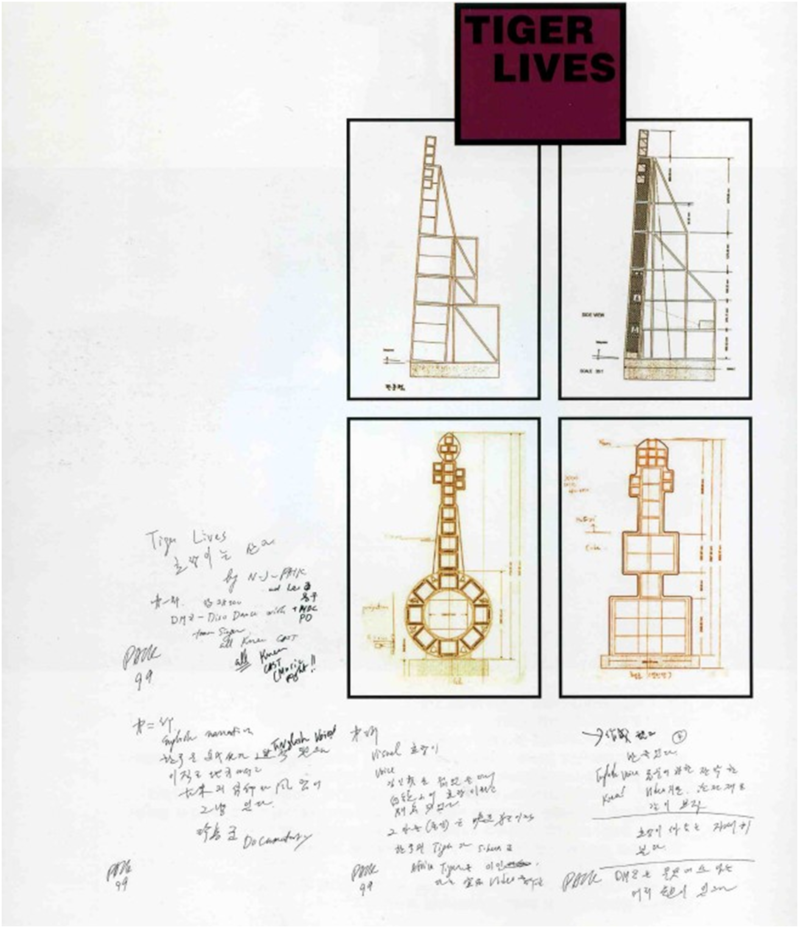 |
| ▲ Paik Nam June’s hand-drawn planning sketch for the artwork ‘The Tiger Is Still Alive’. Photo provided by the author. |
For Paik, the tiger represented "information," "unity," "language," "thought," and "fun." It was also a symbol of "self-respect" and the ever-changing, ever-moving concept of "Fluxus," the international avant-garde movement of the 1960s and 1970s, derived from the Latin word for "flow" or "flux."
Paik transformed the invention of video into a democratic, interactive communication medium, becoming the father of video art, robotics art, and laser art.
The North Korean leader Kim Il-sung, who deified himself as the "Baekdu Mountain Tiger," symbolized the division and the Cold War on the Korean Peninsula. His successor, Kim Jong-il, used a video of a tiger brutally subduing a lion as propaganda for the regime.
In his work, Paik juxtaposed this Cold War symbol with the traditional Korean folk painting (minhwa) tiger. The minhwa depicted the tiger as a symbol of the yangban (noble class), while the magpie represented commoners and the rabbit symbolized merchants. These folk paintings, which anyone could create, symbolized transcendent coexistence across social classes, infused with humor and popular art.
The tiger in these folk paintings resonated with Paik's artistic vision, which embodied a new level of humor and claimed himself as a popular artist.
It was a highly symbolic gesture to feature the tiger, a symbol of protection and warding off evil, as the protagonist of Korea's "Millennium Project" at the dawn of the 21st century.
(C) Yonhap News Agency. All Rights Reserved



















